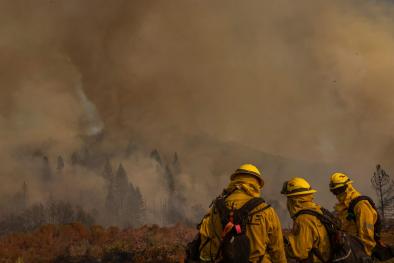Science Source
The role of human-induced climate change in heavy rainfall events such as the one associated with Typhoon Hagibis
Study key findings & significance
- More than 240 mm of rain fell in the Tokyo region on 12 October 2019, associated with tropical cyclone Hagibis. Human emissions of greenhouse gases made the extreme rainfall as the storm made landfall 67% more likely.
- Roughly $4 billion of the $10 billion damage in insured losses caused by the rainfall can be attributed to climate change.
Author quotes
“The negative consequences of the continued burning of fossil fuels are now evident and can be felt also in wealthy countries like Japan."
Related Content
Science Source
| Proceedings of the National Academy of Sciences
Human influence has intensified extreme precipitation in North America
Megan C. Kirchmeier-Young and Xuebin Zhang
Science Source
| Science Advances
Unprecedented climate events: Historical changes, aspirational targets, and national commitments
Noah S. Diffenbaugh, Deepti Singh, and Justin S. Mankin
Science Source
| American Meteorological Society
Precipitation Extremes: Trends and Relationships with Average Precipitation and Precipitable Water in the Contiguous United States
Kenneth E. Kunkel, Thomas R. Karl, Michael F. Squires et al
Science Source
| Nature Communications
Social inequalities in climate change-attributed impacts of Hurricane Harvey
Kevin T. Smiley, Ilan Noy, Michael F. Wehner et al
Science Source
The heatwave in North India and Pakistan in April-May 2022
Study key findings & significance
- The chances of a record-breaking heatwave in north-west India and Pakistan has been made over 100 times more likely because of climate change
- By the end of the century the likelihood is estimated to increase by a factor of 275 relative to the natural climate.
Author quotes
“Spells of heat have always been a feature of the region’s pre-monsoon climate during April and May.
Related Content
Headline

Feb 7, 2024 | Climate Nexus Hot News
Heat And Smoke Are Worse Together Than Apart
Science Source
| American Meteorological Society
Sixfold Increase in Historical Northern Hemisphere Concurrent Large Heatwaves Driven by Warming and Changing Atmospheric Circulations
Cassandra D. W. Rogers , Kai Kornhuber , Sarah E. Perkins-Kirkpatrick et al
Science Source
| American Meteorological Society
Diverse Characteristics of U.S. Summer Heat Waves
Bradfield Lyon and Anthony G. Barnston
Science Source
| Geophysical Research Letters
Spatiotemporal Evolution of Heat Wave Severity and Coverage Across the United States
David Keellings and Hamid Moradkhani


